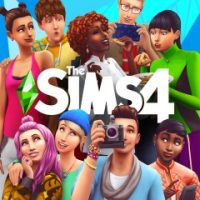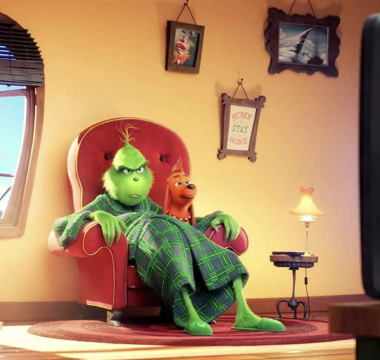A Refreshing Redefinition of a Beloved Tale
As an avid film enthusiast with decades of experience exploring the ever-changing landscape of the cinematic world, I approached the new adaptation of The Grinch with a mix of nostalgia and curiosity. This latest reimagining is a vibrant, layered reinterpretation of the classic tale that many viewers know and love. The film not only delves into the complexity of its lead character but also offers a clever social commentary, all while inviting audiences to watch, stream, and even download for further analysis at their leisure.
A Bold Take on a Iconic Character
The Grinch, traditionally portrayed as a bitter recluse, is re-envisioned here with a surprising level of depth and humanity. This version of the Grinch is charismatic and surprisingly nuanced. The director has taken significant creative liberties, giving the character an internal struggle that is both tender and engaging. Through witty dialogues and emotionally charged scenes, the film effectively bridges the gap between homage and innovation, making it a must-watch for both longtime fans and newcomers alike. This approach invites viewers to stream the film, experience it free on selected platforms, or download it for a private viewing session when the mood for some unblocked holiday cheer strikes.
A Visually Stunning and Thoughtfully Crafted World
One of the most striking elements of this adaptation is its artistic direction. The production design feels both magical and intricate, with a rich color palette that transforms Whoville into an enchanting wonderland. Every frame is meticulously composed, inviting the audience to notice subtle details that enhance the overall narrative. The use of special effects is not overbearing but rather serves a clear purpose—to evoke a genuine sense of whimsy and anticipation. In today’s world where many films are available to stream or download at any time, The Grinch differentiates itself by offering an immersive visual experience that is difficult to find on any unblocked online repository.
A Blend of Humor, Heart, and Modern Relevance
The screenplay of The Grinch excels at balancing humor with meaningful commentary. While the film leans into the traditional slapstick moments that are sure to invoke a smile (or even a hearty laugh), it simultaneously discusses themes of isolation, acceptance, and the transformative power of community. For a film that must abide by an age rating for families—specifically, PG—the narrative manages to be both accessible and thought-provoking. This balancing act is one of the film’s greatest strengths, as it invites multiple viewings to appreciate the subtle layers hidden beneath the surface.
In an era when viewers often watch and stream content online, the inclusion of diverse cinematic elements is vital to stand out amidst competition. This adaptation provides plenty for discussion in film review circles, whether you’re debating its faithfulness to tradition or admiring the bold steps taken to update the story. It also serves as a reminder that classic stories can be revisited and transformed thoughtfully, offering fresh perspectives while still resonating with audiences of all ages.
Strong Performances and Character Dynamics
Equally important to the film’s visual excellence is the range of sterling performances from its cast. The lead actor portrays the Grinch with an intensity that is both emotionally charged and endearingly sardonic. The transformation is convincing—the character’s journey is one of self-realization, and each scene feels meticulously rehearsed to capture that metamorphosis. Supporting roles breathe authenticity into the world of Whoville. Every interaction, whether it be a light-hearted banter or a moment of quiet reflection, is crafted with attention to detail. This ensemble of actors elevates the film from a simple retelling to a narrative that is rich in character development and ripe for in-depth analysis after you decide to stream or even download it for a detailed re-watch, especially on unblocked platforms that make classic cinema accessible anytime.
Embracing Contemporary Techniques Without Losing Its Heart
Modern filmmaking is often a balancing act between respecting tradition and incorporating innovative storytelling techniques. The creative team behind The Grinch has clearly chosen to embrace both ends of the spectrum. The dialogue is peppered with contemporary references and a fresh vernacular that resonates with today’s audience. Yet, at its core, it remains a tale about transformation and the magic of human connection. This is essential in an era where viewers expect a film that can be enjoyed not only on the big screen, but also watchable and shareable online. The film’s structure invites audience participation on digital platforms, where discussions and fan theories have become an integral part of modern film appreciation communities.
An Engaging Soundtrack and Well-Timed Moments of Levity
No film is complete without a soundtrack that perfectly accentuates the narrative’s highs and lows, and The Grinch delivers in abundance. The musical score is a harmonious blend of festive melodies and somber undertones that dynamically shift with the on-screen action. This musical journey enhances the overall mood, ensuring that viewers are seamlessly transported from whimsical wonder to moments of deep emotional resonance. In the current era of digital consumption where users may stream or download their favorite soundtracks from the same platforms as the film itself, the soundtrack of The Grinch becomes an additional layer of the storytelling experience that invites listeners to experience it for free or with a subscription-based service.
The Relevance of Tradition in a Digital Age
It is no small feat to remaster a revered classic for a new generation while respecting its origins. The Grinch achieves this by staying true to the heart of the original narrative while carefully updating its context to reflect modern societal values. The film is thoughtful about pushing forward messages of inclusion and understanding, which resonate in a time where the online community is more vibrant and interconnected than ever before. The integration of modern cinematic techniques with a story steeped in tradition allows audiences to engage with it on multiple levels—whether they are watching it on traditional media or streaming and downloading it from unblocked online sources.
A Seamless Fusion of Innovation and Nostalgia
The creative direction adopts a refreshing approach by blending humor with moments of poignant introspection. This fusion is further underscored by the careful casting and directing choices, which make the film an exemplary study in how modern animations and live-action artistry can be combined effectively. As your trusted film reviewer, I can attest that this version of The Grinch is not simply a rehash of past narratives; it is a deliberate modernization that feels both exciting and respectful to its storied legacy. With an age rating tailored for a wide audience, the film is a delightful option for family movie nights, making it easily accessible on a host of multimedia platforms where one can watch, stream, and download without hassle.
An Invitation to Rediscover a Timeless Classic
For seasoned film lovers and casual viewers drawn to iconic stories, The Grinch offers a thought-provoking experience that transcends the boundaries of typical holiday fare. Beyond the surface-level festivities, it encourages a reflection on societal norms and personal growth—a narrative packaged within a charming, visually arresting production. Its appeal is multiplied by the ease with which it can now be accessed online, thanks to broad availability across major streaming platforms. Instead of a passive viewing experience, it invites its audience to engage intellectually and emotionally, ensuring that every moment compels you to watch, stream, and discuss its meaning long after the credits roll.
A Final Word on an Endlessly Enchanting Tale
This film is more than just a movie—it is a contemporary piece of art that revisits an age-old story with ingenuity and heart. With a screenplay that deftly navigates humor and poignancy, a dynamic visual style that commands attention, and a well-tailored narrative that honors its roots while embracing modern sensibilities, The Grinch is a must-see for anyone passionate about film. An experienced reviewer appreciates the creative risks taken, the successful blend of genres, and the careful attention paid to delivering a story that is as relevant today as it was when the original tale was first told. It stands as a shining example of how an age-old narrative can be revitalized, becoming accessible through diverse online channels—whether by watching, streaming, or downloading through various unblocked platforms. The age rating, thoughtfully designated for family-friendly viewing, ensures that audiences across the spectrum can enjoy this modern masterpiece.
How to watch The Grinch online
The Grinch is currently accessible on various streaming platforms. For those looking to watch this holiday classic, the film is available on Netflix, which often offers a trial period and the ability to download episodes for offline viewing. It can also be found on Amazon Prime Video, where you have the options to rent or purchase, with offline access available for subscribers. Apple TV provides a purchase or rental option with exceptional streaming quality and download capabilities. Meanwhile, Peacock offers both free and premium streaming, though download options might be limited to premium subscribers. Hulu showcases the film as well, with potential trial periods but restricted download features. Alternatively, YouTube (Movies) allows renting or buying of The Grinch with options for downloading through its app. The film holds a G age rating in the United States, making it suitable for all ages, ensuring that families can enjoy the film together without concerns over content appropriateness.



















